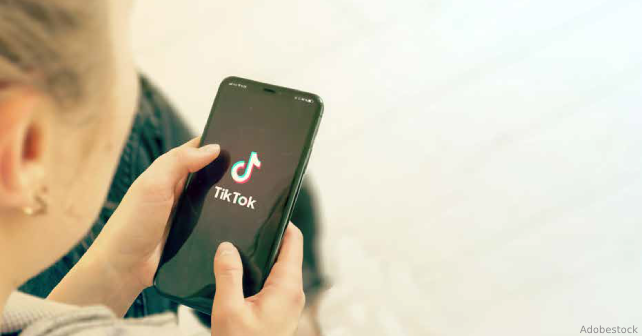
In the midst of a busy emergency department (ED) shift, it’s common for an emergency physician to consult UpToDate, WikiEM, and YouTube to obtain information on a medication dosage or some zebra of a medical condition. It is our practice to review a YouTube video of a paracentesis just before doing one or referencing UpToDate to dose sulfamethoxazole/trimethoprim for a child. In recent years, social media has taken the world of medicine by storm and the sharing of medical knowledge has grown on these open platforms. In fact, a recent study showed that up to 70 percent of physicians in the United States use social media in some capacity.1 Launched in 2017, TikTok, a video-based social media platform, has evolved past the original Facebook, Twitter, and Instagram era and has grown to over one billion active global users. Its under 60-second video format appeals to society’s shortening attention spans.
Explore This Issue
ACEP Now: Vol 42 – No 04 – April 2023Just-in-time training and information recovery is a major reason an emergency physician may use TikTok over other social media platforms like YouTube.3 The average YouTube video is 11 minutes in length and an emergency physician may have only a minute to brush-up on a procedure or treatment plan while working in a busy emergency department.4 There are many time-related metrics in our practice like time to tPA or time to the cardiac catheterization lab and obtaining information as quickly as possible becomes more important. Whether it is a brief video prior to a central venous catheter insertion or an update on COVID-19 treatment recommendations, TikTok may be more advantageous to the emergency physician instead of a lengthy explanation on YouTube or long Twitter thread minutes before performing the task at hand. Perhaps that is why other major social media platforms have adopted TikTok’s model such as YouTube Shorts and Instagram Reels.5 Can emergency medicine physicians harness the power of TikTok to expand their networks, connect with colleagues, and provide meaningful education? Dr. Adam Goodcoff (@seethemedlife) is one of the largest emergency medicine educators on TikTok. His videos have titles such as “There are so many Diabetes Meds” and “Got a nose bleed? Watch this!” These videos are augmented with text boxes, music, and graphics that highlight the messaging.6
With colleagues, I conducted a study to analyze TikTok content related to the field of emergency medicine with the goal to gather key insights on the nature of the content and creators on this new frontier. We performed a systematic search with a group of medical students on December 4, 2022, searching for all content under the hashtag #emergencymedicine. We discovered that almost half of the videos were created by physicians and found that around half of the videos contained educational material. We also found that most videos created for entertainment purposes were directed towards an audience with a medical background. Take for example Dr. Glaucomflecken (@drglaucomflecken), whose 2.1 million followers and international prestige propelled him to the keynote stage at ACEP Scientific Assembly in San Francisco.
#emergencymedicine on TikTok shows evidence of reliable contributors and meaningful educational material – for example consider checking out@seethemedlife, @drjoe_md, @lifeofadoctor, @doctor.darien, and @dr.jmack. 74% of all U.S. adults use the Internet, and 61% have looked for health or medical information on the Internet.7 Consequently, it’s no surprise that health care workers are making their presence felt on this platform. Although this doesn’t guarantee that all content will be medically accurate and appropriate, it is reassuring to find a significant number of physicians creating valuable educational content that could benefit viewers. The intersection of TikTok and Emergency Medicine will likely grow and as emergency physicians, we may someday find ourselves referencing TikTok for valuable information amid that busy ER shift.
Mohamad Moussa, MD, FACEP is an Associate Professor of Emergency Medicine and Residency Program Director at The University of Toledo (@MMoussaMD).
Citations
- Hameed I, Oakley CT, Ahmed A, et al. Analysis of Physician Use of Social Media. JAMA Netw Open. 2021;4(7):e2118213. doi:10.1001/jamanetworkopen.2021.18213.
- Bursztynsky, Jessica. “TikTok says 1 billion people use the app each month”. CNBC. Retrieved 16 February 2023.
- Itoh T, Lee‐Jayaram J, Fang R, Hong T, Berg B. Just‐in‐time training for intraosseous needle placement and defibrillator use in a pediatric emergency department. Pediatr Emerg Care 2019;35:712–5.
- Clement J. Average YouTube Video Length as of December 2018, by Category. Statista. 2017. Available at: https://www.statista.com/statistics/1026923/youtube‐video‐category‐average‐length/. Accessed on March 2, 2023.
- Yurieff K, O’Brien SA. With TikTok’s future uncertain, users are jumping to these other apps. CNN. 2020. Available at: https://www.cnn.com/2020/08/04/tech/tiktok‐alternatives/index.html. Accessed March 2, 2023.
- Comp G, Dyer S, Gottlieb M. Is TikTok The Next Social Media Frontier for Medicine? AEM Educ Train. 2020 Oct 21;5(3):10.1002/aet2.10532. doi: 10.1002/aet2.10532. PMID: 34095694; PMCID: PMC8155692
- Fox S, Jones S. The social life of Internet users. Washington, DC: Pew Internet & American Life Project. 2009.
Pages: 1 2 | Multi-Page




No Responses to “Is There a Place for TikTok in Emergency Medicine Practice?”